Chilling Photos That Show What Chernobyl Looks Like Today
On April 26, 1986, Reactor Four in the Chernobyl Nuclear Power Plant overheated and exploded, causing one of the worst nuclear disasters of all time. The nearby city of Pripyat was evacuated and many were left dead or seriously ill. Even today, the area around the Chernobyl plant is uninhabitable.
It took weeks for the Soviet Union to admit to their mistakes, and it has taken nearly twenty years for Ukraine to allow people to return to the nuclear zone for short visits. Today, people are able to tour and photograph what's left of the nuclear ghost town. Read on and see the incredibly eerie photographs of what remains today in Chernobyl.
The Entire City Of Pripyat Was Evacuated

The city of Pripyat, Ukraine, was built just to house the workers of the Chernobyl Nuclear Power Plant. The workers and their families totaled more than 49,000 and the Soviet Union town would be considered similar to a coal mining town in America.
The city was originally meant to be much smaller, but at the time of the disaster, it included fifteen elementary schools, one hospital, ten different gyms, and three indoor swimming pools. All of them became abandoned.
A Series Of Unfortunate Events
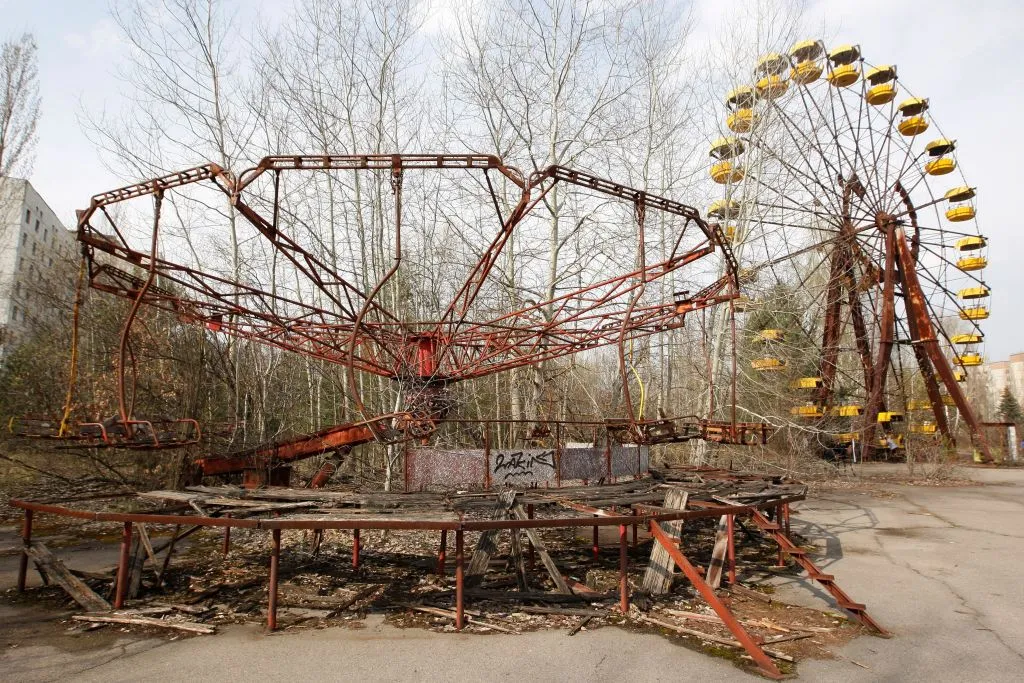
There were problems with the Chernobyl Power Plant leading up to April 26. They failed three different tests to create alternative forms of power to keep a reactor going in case of an issue. Then, on April 26, scientists tried to bring Reactor Four back on track only to have it accidentally surge with power.
The power surge caused a domino effect which in turn created a string of explosions within the reactor. The domino effect was so bad it even reached into Reactor Three.
The Explosion Was 400 Times Worse Than The Atomic Bomb
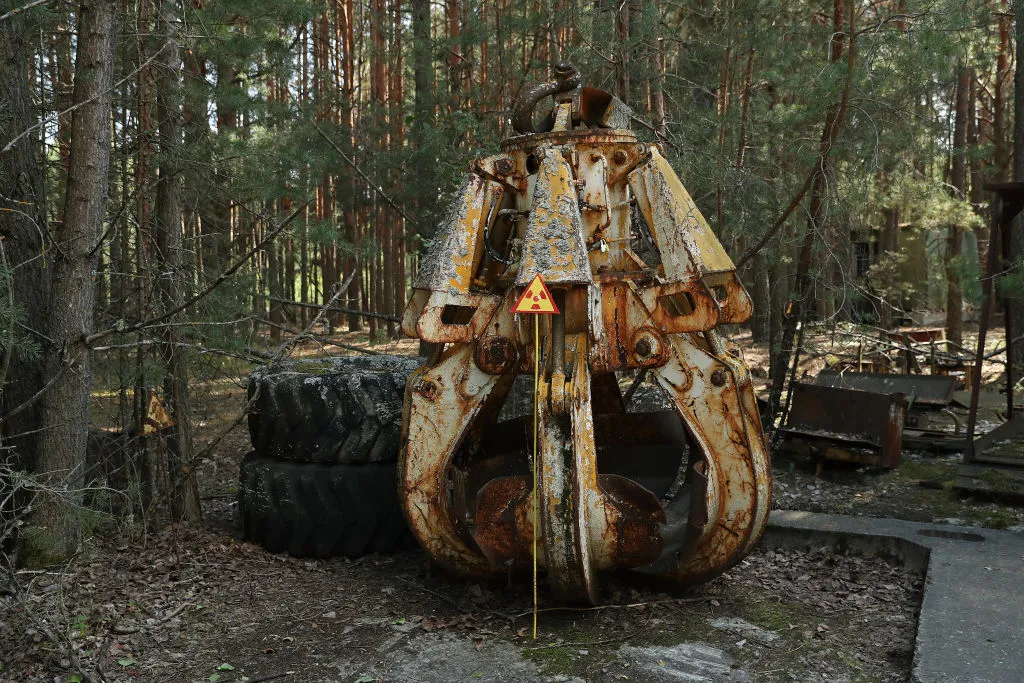
If you're wondering just how bad the explosion was at the Chernobyl power plant, scientists have estimated it was 400 times worse than the atomic bomb that the United States dropped on Hiroshima.
This metal claw was used to clean up Reactor Four immediately after the disaster and is still extremely radioactive today. It's so dangerous that they can't even remove it from the area without contaminating transportation and workers.
The Fire Raged For A Week
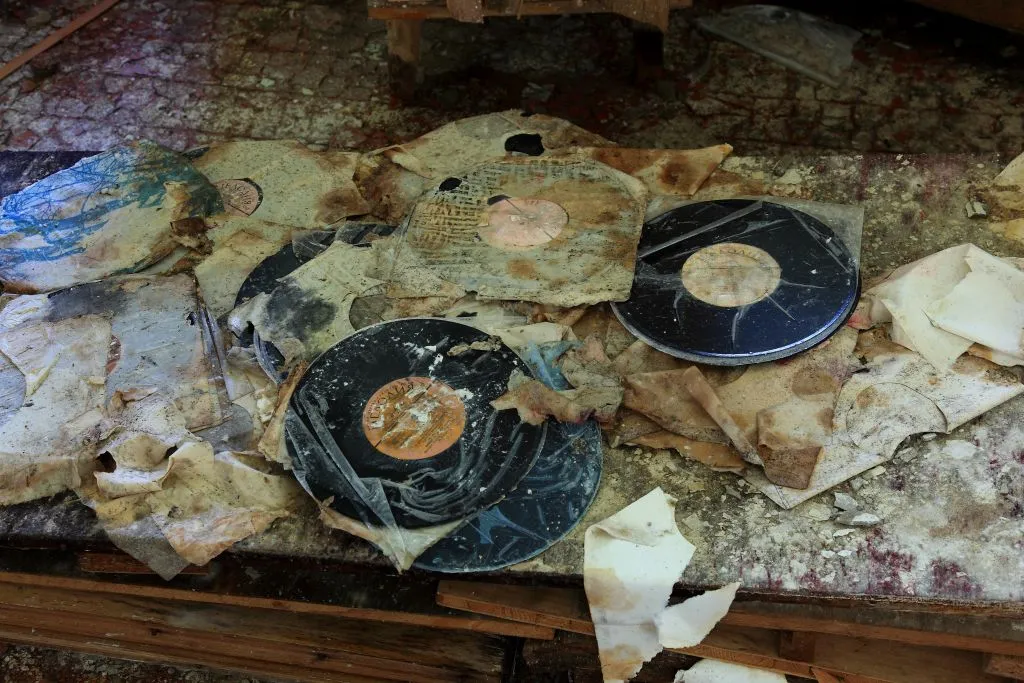
The fire that came from the nuclear reaction raged outside the factory for more than a week. One of the Soviet Union's fatal mistakes was bringing in more people to fight the fire. In fact, soldiers from all over the Soviet Union were shipped into Chernobyl without any proper radioactive protection.
The firefighters and soldiers who did arrive to fight the flames were often left with deformed bodies and many died of cancer.
The Nuclear Fallout Traveled All The Way To Ireland

Thanks to the enormous fire that raged for more than a week, huge plumes of radioactive smoke were released into the air and atmosphere. Most of the fallout settled north over Belarus and around Ukraine, but the air currents brought the smoke all across Western Europe.
The fallout from the fire reached as far west as Ireland and there were even reports of nuclear rain in France, Belgium, and the United Kingdom.
It Took 36 Hours For The Soviets To Actually Evacuate

An open notebook, beer bottles, and a plate with food can still be seen leftover in an abandoned house. While the blast was alarming and residents of Pripyat knew something was wrong, it took 36 hours before Soviet officials were ready to admit that an evacuation was necessary. Even then, they told residents they would return in a few days so many took only essentials.
Finally, on April 28, officials called for an immediate evacuation of anyone with a 10 km (6.2 miles) radius. As the days passed, the evacuation zone just kept growing.
About 100 People Still Live There

Some women and families chose to return to their villages in or around the Chernobyl contamination area after the meltdown in 1986. About 1,000 mostly older women and their children moved back into the exclusion zone weeks or months after the disaster. For them, Pripyat was their home and they had deep roots in the area.
Older people were allowed to return to the area because officials figured at least when they died, they would be happy. Still, about one hundred have managed to fight off the radiation in their bodies.
It Is Still The Biggest Man-Made Disaster Of All Time

To this day, the Chernobyl disaster remains the worst man-made environmental event of all time. It was the first Level 7 incident on the International Nuclear Event Scale (INES). The only other Level 7 event to occur was the Fukushima nuclear disaster in 2011.
Chernobyl remains the worst though because the nuclear fallout and contamination have caused an unknown amount of deaths. In comparison, Fukushima has only been held responsible for one related death.
The City Is Now Overrun By Wolves

The area around Chernobyl might be radioactive and contaminated, but that hasn't stopped wildlife from returning to the area and overtaking it. Trees and wildlife have overtaken the area, including foxes, moose, beavers, and birds. In fact, wolves now outnumber humans in the area because they've been able to flourish without interference.
The return of wildlife to the area has been a fascinating topic for scientists who are still studying how the radioactivity affects the animals.
Radioactive Iodine Was The Early Killer

It was radioactive iodine that took the lives of the plant workers and first responders. After the blast, the few plant workers who survived recall seeing a strange, blue light around the reactor. This was caused by the ionization of the air.
Since the iodine was floating throughout the zone, workers could breathe it in and it would build up in the thyroid gland. Most workers and first responders died of thyroid cancer as a result.
Then Came The Long-Term Killers

Once the initial threat of radioactive iodine was gone, the long-term threat didn't come from the air, but from the ground. Strontium-90 and Cesium-137 were emitted with the blast and settled on the ground, where livestock ingested it.
Strontium-90 is calcium-based so it is found in milk from the affected area. Cesium-137 is potassium-based and found in the blood and tissue of the animals. People who returned and ate the livestock ended up becoming contaminated as well.
The Children Of Chernobyl Are Still Affected Today

The children who were exposed to the Chernobyl explosion have lived with side effects for years. They have ten times the normal rate for thyroid cancer and some scientists believe they might pass on radiation to their own children.
Especially if they still live in or around the affected area, there is a 200 percent increase in birth defects. Around the disaster area, nearly 6,000 children are born every year with genetic heart defects.
It Was Sweden Who Alerted The Rest Of The World

It's important to remember that all of this was going on during the Cold War. There was minimal sharing of information between the Soviet Union and the rest of the world. The world didn't even know about the Chernobyl disaster until days later when the sensors at a Swedish Nuclear plant began to read high levels of radiation.
Sweden sent out an alert to the rest of the world and it didn't take long for Western scientists to figure out where the reaction originated.
The Elephant's Foot Is The Deadliest Area Of Them All

Located below Reactor Four and underneath the sarcophagus today, the "Elephant's Foot" is the most radioactive area of Chernobyl. The foot is a pile of direct radioactive waste that could not be removed or covered at the time. When the foot was first formed, being exposed to it for just 60 seconds was enough to kill a worker.
Today, officials have decided that 500 seconds is enough time to kill you. The Elephant's Foot will remain highly radioactive for at least 100,000 years.
Fear Caused Soviet Doctors To Overreact

When it comes to radiation, it's better to be safe than sorry. But looking back on the response many think that after initially under-reacting, the Soviet Union then over-reacted when it came to health concerns.
Fears about leukemia and cancer were common, but doctors even began suggesting (and some rumors say forcing) women from the area who were pregnant to have abortions. They feared the babies would have issues and would be a lifelong example of Soviet failure.
The Red Forest Showed Off Radiation
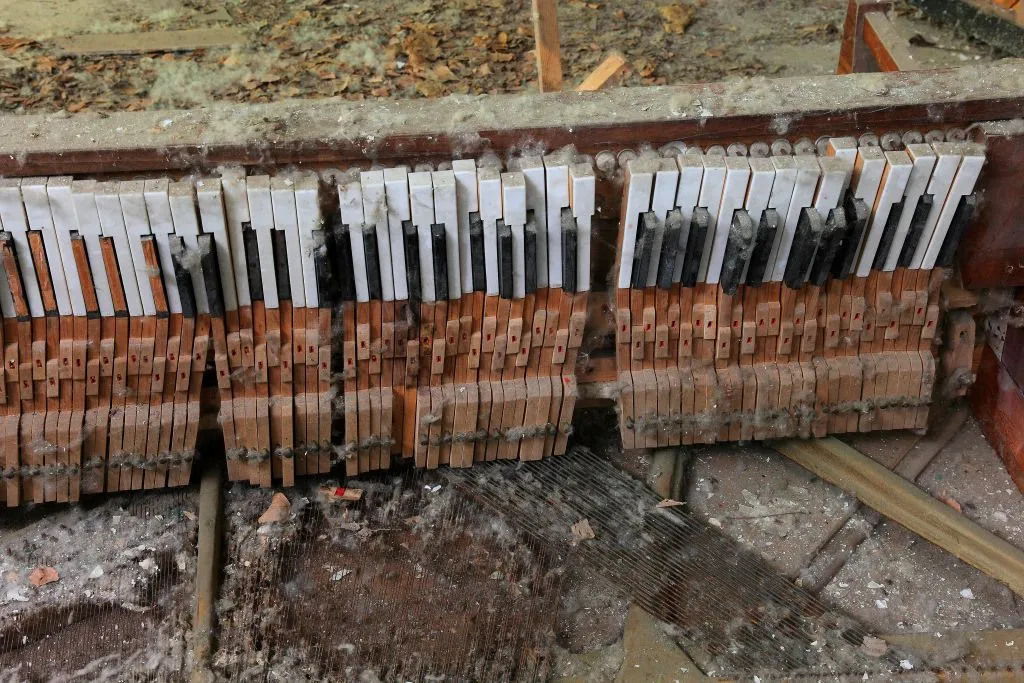
The environment took a huge hit from the initial radioactive fallout. Many trees in the surrounding area died immediately. One bunch of pine trees that were directly downwind from Reactor Four turned reddish-brown like on an autumn day. The dead bunch of trees earned the nickname the "Red Forest" and had to be bulldozed down.
Even today, trees and fauna in Chernobyl grow substantially slower than trees in the surrounding areas.
The Cleanup Was Deadlier Than The Blast

Although you might think the initial power surge and explosion would have been deadliest for the workers of the power plant, it was the cleanup that killed the most. Only two plant operators died in the initial blast. In the four months of clean up following the blast, 26 more workers died.
Today, those 28 total workers are commemorated as heroes. Many even knew that their actions would likely kill them but that the clean up needed to be done.
Ukraine Allowed Tourists To Return In 2011

As of 2011, Ukraine decided to allow specially organized tours to visit the affected area. The tours are run out of Kyiv and have to follow a strict set of rules. Every tourist receives their own radiation monitor just in case, and they are only permitted to stay there for a certain period of time.
Here, a tourist is seen feeding one of the wild foxes that have overtaken the area as its home.
The Soviets Attempted To Cover It Up

After the Swedish Nuclear Power Plant alerted the rest of the world to the high levels of radiation, the west pressed the Soviet Union for an explanation. The Soviets admitted to the world that there was an accident that had killed two people but they lied and said nothing else was wrong. The Soviet hadn't even announced the situation to their own people.
It took until May 6 for the Soviets to admit something was wrong because they had to close the schools in Kyiv, the capital city which was more than 65 miles from the plant.
The Power Plant Actually Remained Open
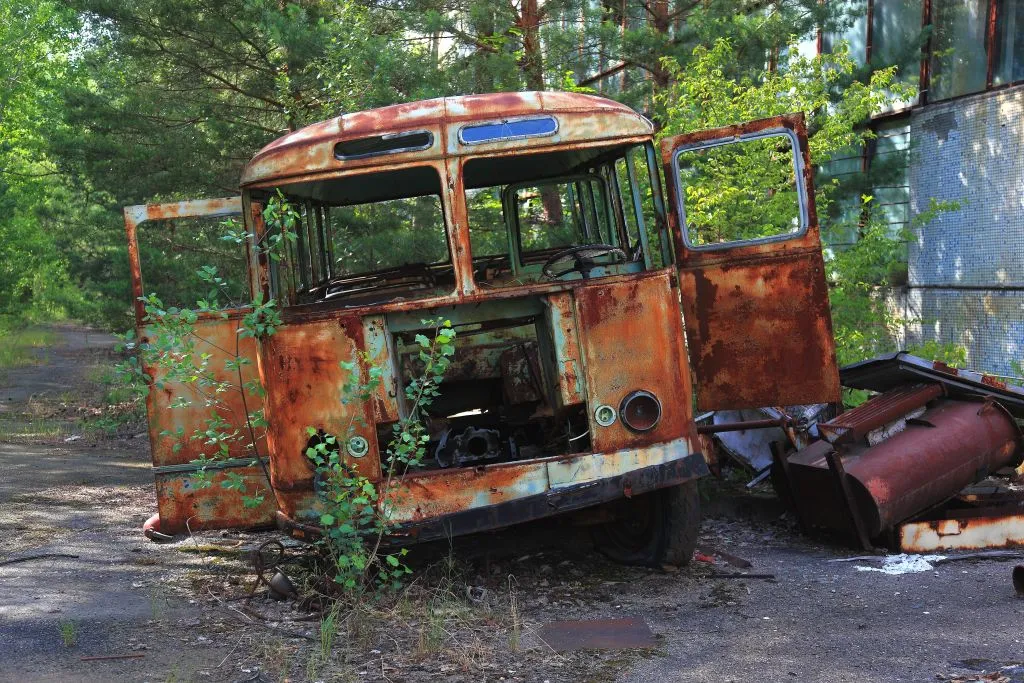
Believe it or not, the Soviet Union and then Ukraine kept the Chernobyl Power Plant operating all the way up until 2000. They simply covered Reactor Four with a protective "shell" and continued working.
Anyone working at the plant had to follow strict labor laws and were monitored by international advocacy groups. If you were a worker on site at the power plant, you could only work five hours a day for one month, and then you have to take a mandatory 15 days off.
It Won't Be Habitable For 20,000 Years
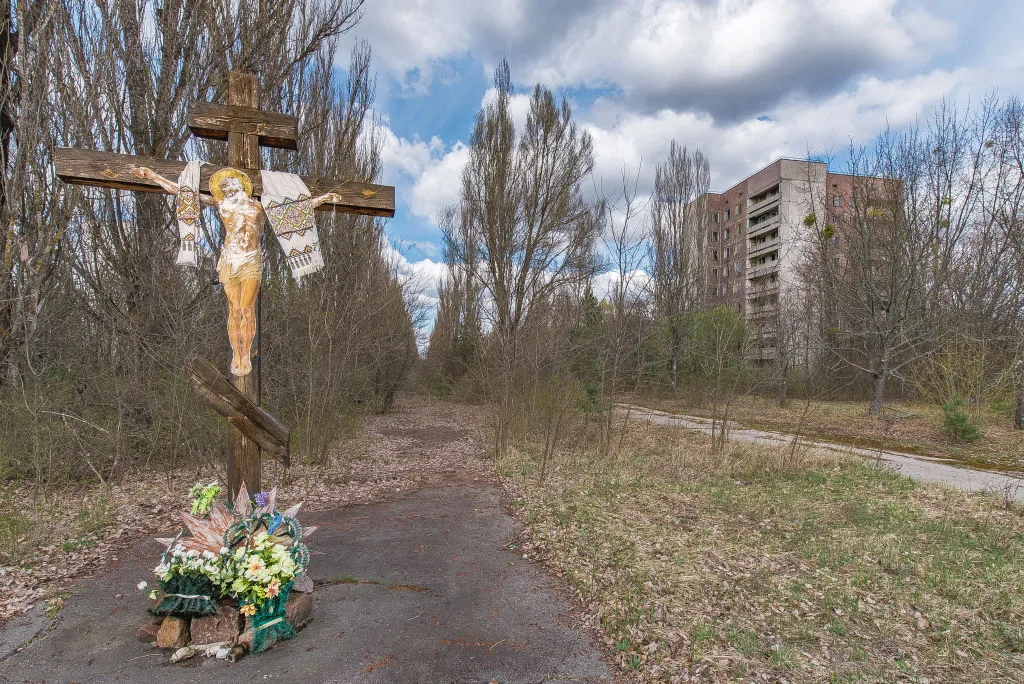
Don't be fooled by the wildlife living in the area and the return of trees and forests. Ukrainian scientists have estimated that the lands around the Chernobyl Power Plant won't be safe to inhabit for another 20,000 years. Other scientists from around the world say 30,000 years is an even safer option.
There have even been restrictions about how close to the zone you can hunt and fish in Ukraine.
They're Still Cleaning Up

The protective "shell" that the workers first covered up Reactor Four with was effective, but not a permanent solution. They dropped sand, lead, and boron into the reactor core then built a large concrete structure over it. The "shell" known as the sarcophagus has over time begun to creak and leak.
In 2016, Ukraine began constructing a new sarcophagus, but they admit that the zone will not be completely cleaned up until about 2065.
The Safety System Had Actually Been Turned Off
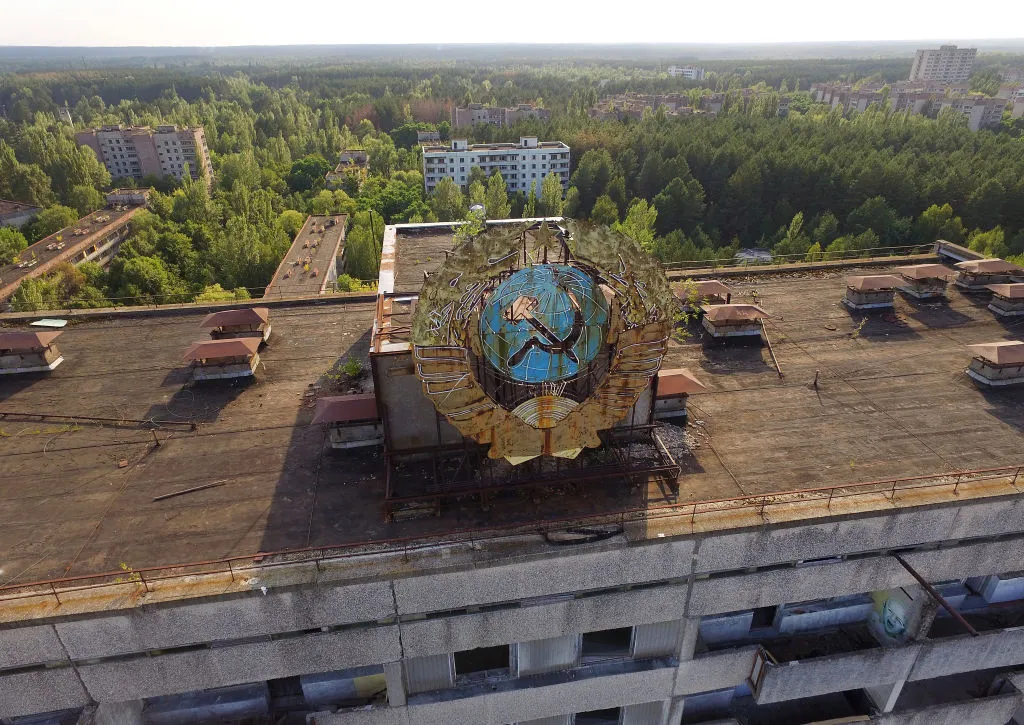
The series of unfortunate events that led up to the Chernobyl nuclear disaster might have been avoided if the power plant had their safety system functioning properly. Each of the reactors were set up with an emergency core cooling system which stops the nuclear debris from overheating and, in turn, surging with power.
If that system hadn't been turned off unnecessarily for the test, then the meltdown might have been avoided.
Surprisingly, The Blast Might Have Helped In The Long Run

While the cancer rates from the nuclear meltdown at Chernobyl increased after the disaster, some doctors and scientists have argued that it helped in the long run by evacuating the area. Cancer-related deaths had been increasing in the area for years leading up to 1986, largely due to background radiation.
By evacuating such a large area, many scientists believe that in the long run, fewer people have ended up with cancer.
For Some Reason, Insects Hate Chernobyl

Even though wildlife and fauna have returned to Pripyat and Chernobyl to create a home, spiders and insects have stayed away. Scientists and biologists are not sure why these animals specifically have chosen to remain outside the area, but anyone who has read Spiderman knows radioactive spiders aren't what anyone needs right now.
Birds also tend to stay away from the nuclear zone and the ones that have remained have shown smaller than average brains and wingspans.
Belarus Got The Worst Of It

Even though Pripyat and the Chernobyl Nuclear Power Plant are located in Ukraine, Belarus got the worst amount of contamination. Pripyat is close to the border of Belarus, and the winds at the time meant most of the radioactive smoke blew north towards Belarus rather than south into the rest of Ukraine.
It was estimated that 70% fo the radioactive material landed in Belorussian fields. This might also explain why Sweden was the first to notice the radioactive readings.
Nuclear Testing In The 1950s Technically Did More Damage

While the fallout from the Chernobyl disaster was deadly to the environment, because it was quickly contained in the area and the fire only burned for a week, it wasn't as bad as most nuclear testing from the 1950s and 1960s.
In fact, some studies have shown that the radiation in the Nevada desert in the United States is just as high from nuclear tests as the area around Chernobyl.
Chernobyl Has Been A Favorite Setting For Movies, Television, And Video Games

The images of a nuclear ghost town stuck in time just before the fall of the Soviet Union has made Pripyat and Chernobyl a favorite setting in the entertainment industry. One horror film from 2012, Chernobyl Diaries, is set in Pripyat and follows a tour group that gets stranded and has to deal with mutant monsters.
Chernobyl has also been featured as a destination in films like Transformers: Dark of the Moon and Live Free Die Hard.
Some Believe The Financial Cost Ruined The Soviet Union

There were a lot of reasons why the Soviet Union eventually fell apart in 1991, but some economists believe that the $18 billion USD spent at the time harmed the country so badly it couldn't turn back. Adjusted for inflation, that's $41 billion USD today.
Soviet leader Mikhail Gorbachev said this money was spent just containing the zone, and that health costs were not factored in. Even today, Ukraine sets aside 5-7% of their government spending on Chernobyl-related reasons.
The Psychological Toll Was Just As Dangerous

Analysts have also argued that the moral costs of the Chernobyl disaster greatly affected the Soviet Union. Many think because they lied for so long to the public about the disaster, that the younger generation began to lose faith in the system and turn against the leadership.
Depression and thoughts of suicide were also side effects for those directly affected by the Chernobyl disaster, largely in part due to illness and being uprooted from their homes.
The United Nations Came Together
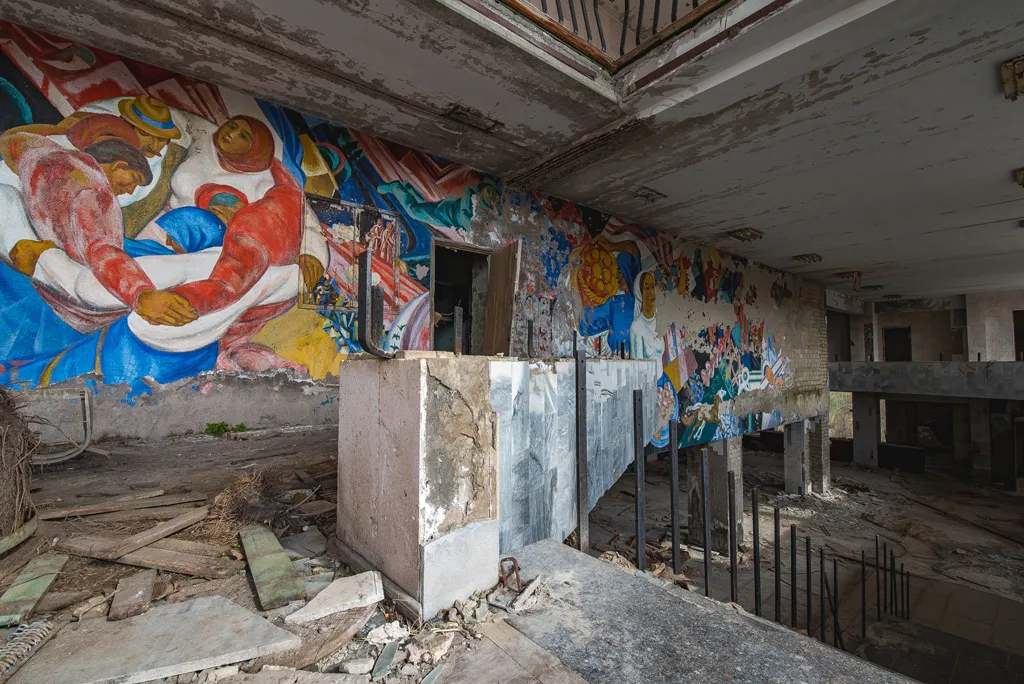
This abandoned building is yet another casualty from the disaster of over 30 years ago. Since news broke around the world, many charities have come together to bring relief by the citizens who were affected.
The United Nations, for example, launched the Chernobyl Recovery and Development Programme in 2003. Their main goal was to support the Government of Ukraine in alleviating the consequences of the disaster in the surrounding areas.
Children Are Still Suffering
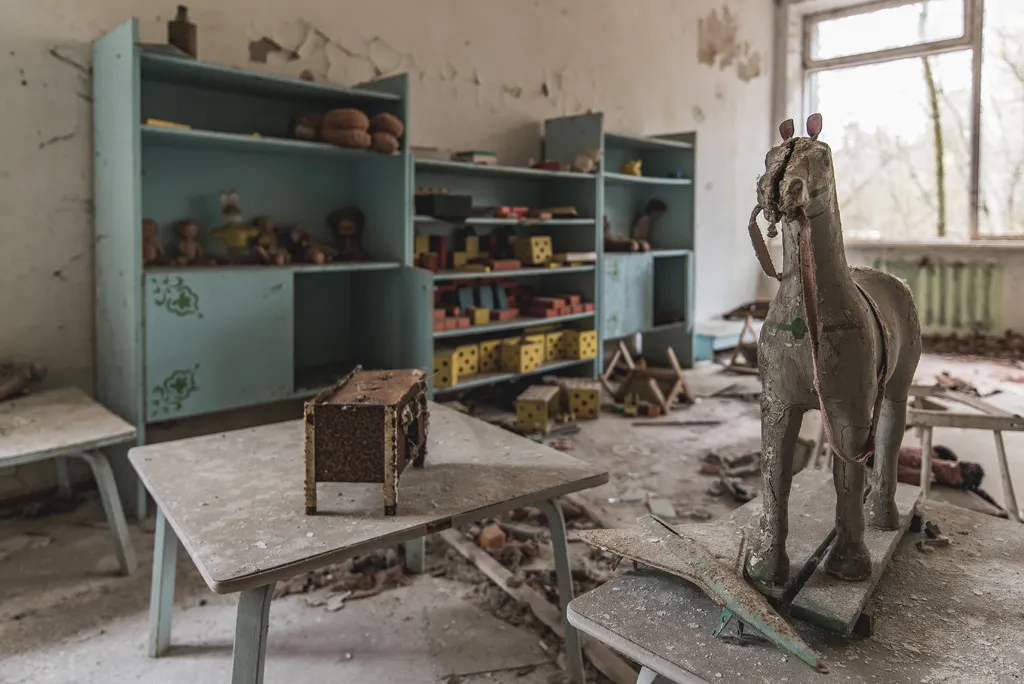
This is the aftermath of what the disaster wreaked on a child's bedroom in Pripyat. Many years later it remains untouched, leaving many to wonder about the fate of this poor child.
The United Nations also supported the non-profit Chernobyl Children International. They work with families who are still affected by the economic outcome of the incident by offering medical and humanitarian aid. This organization was founded by Irish activist Adi Roche.
There Is Still A Huge Risk
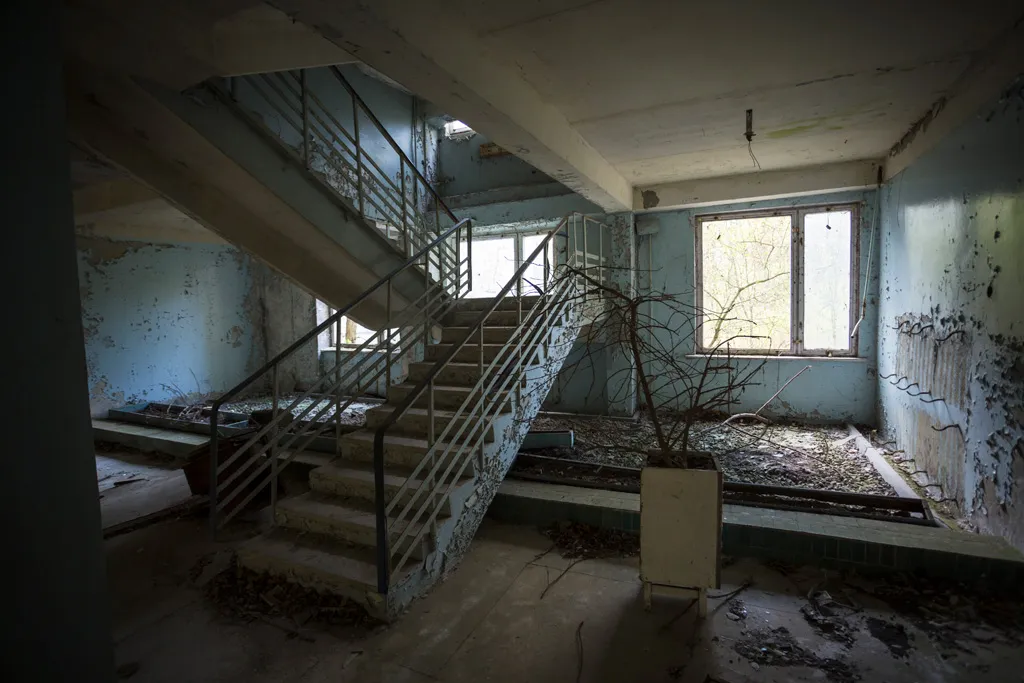
This abandoned building has clearly been taken over by the slow re-growth of mother nature in the area. Trees have begun sprouting in the building despite the overwhelming presence of concrete.
Though the native foliage is growing back slowly, there is still concern over the possibility of forest fires. During the dry seasons especially, the now-radioactive forest is at an even greater risk of catching on fire which would spread radioactivity out of the exclusion zone.
Taking The Radiation Contaminated Structures Down
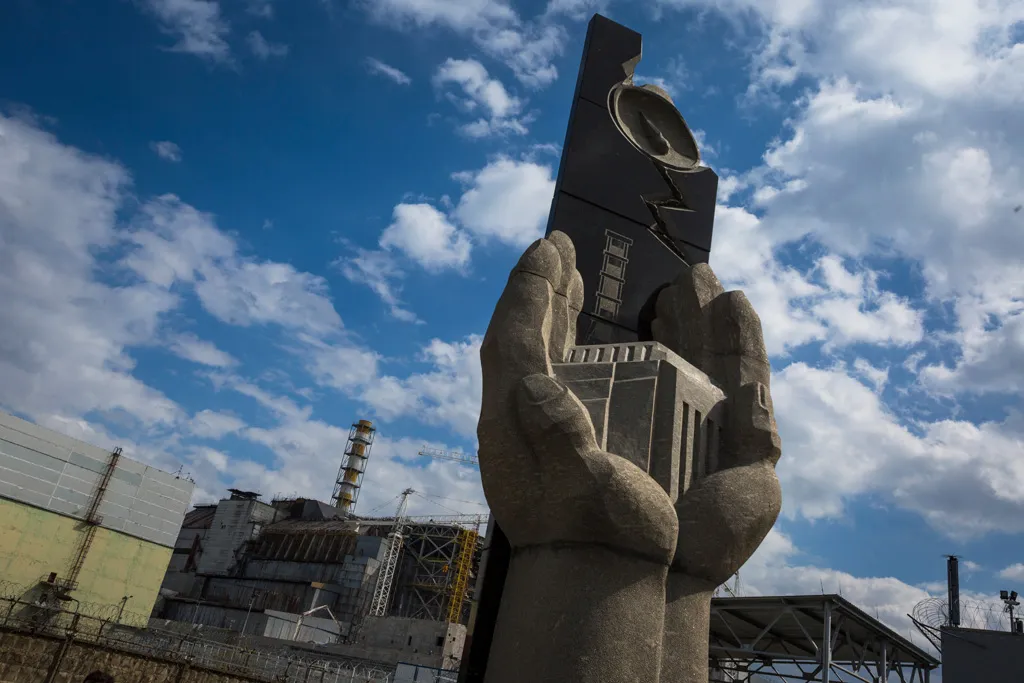
This memorial was erected to commemorate the liquidators of the shelter and containment area built over the fourth block. One charity that has been working to create safe conditions for dismantling radioactive structures is the Chernobyl Shelter Fund.
Set up in 1997, it was projected to take up to nine years and cost up to $768 million USD. But it was meant to create a stable and safe shelter system for at least 100 years.
A Worker Remains Entombed
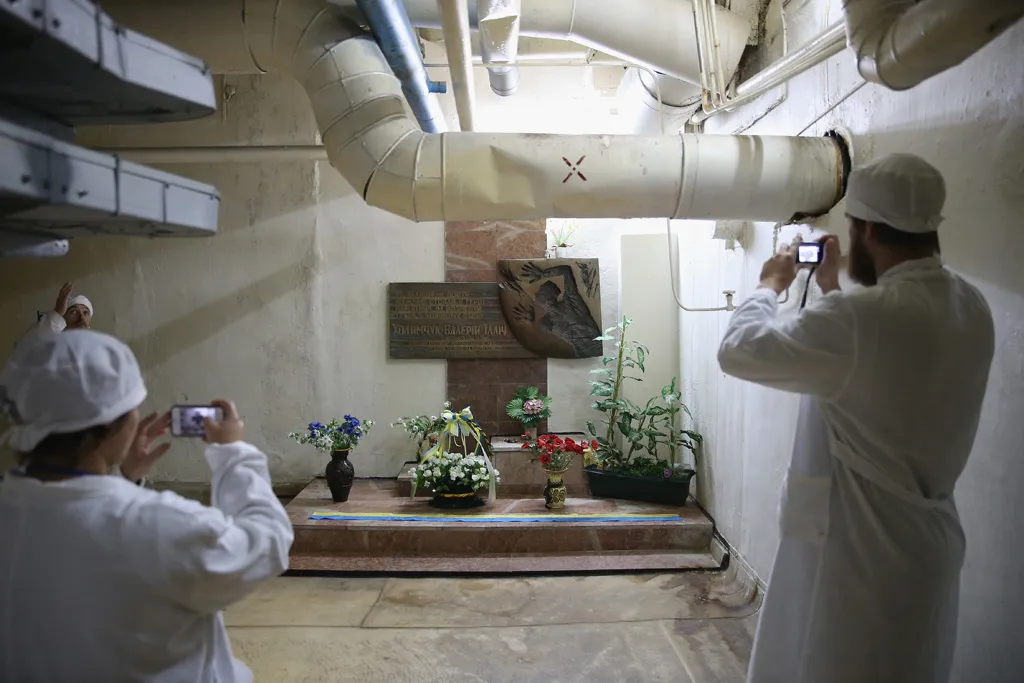
These tourists are taking photos of a memorial set up in the honor of Valery Khodemchuk. Khodemchuck worked as a circulating pump operator and was killed in the accident at reactor four. In fact, his body remained entombed inside the reactor four site.
His life was just one of many sacrifices made in the accident that day. This way he will certainly not be forgotten for the unfair way that his life had to end.
Looking Back At The Past
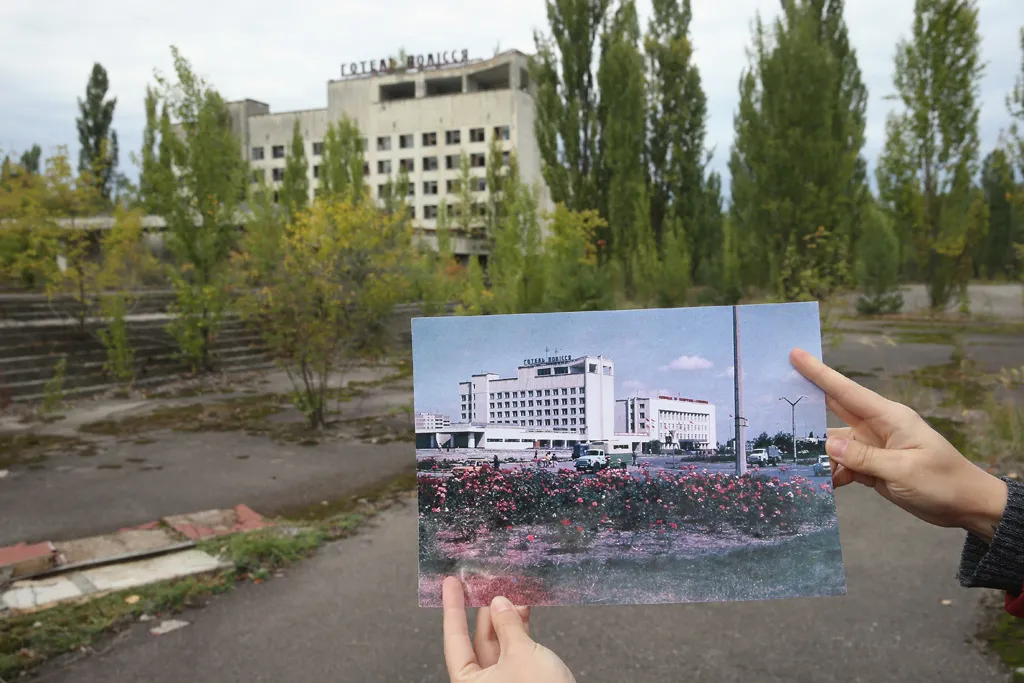
The effects of the Chernobyl disaster are most evident in Pripyat's main square. It was the site of the city's Polissya hotel before the accident happened. Now it is overgrown with trees and shrubs where flowers used to grow.
Before the disaster, Pripyat had a population of 49,400 people who averaged about 26 years old. It was clear that they were a community that had a lot of potential to grow into something great.
The Abandoned Culture Center
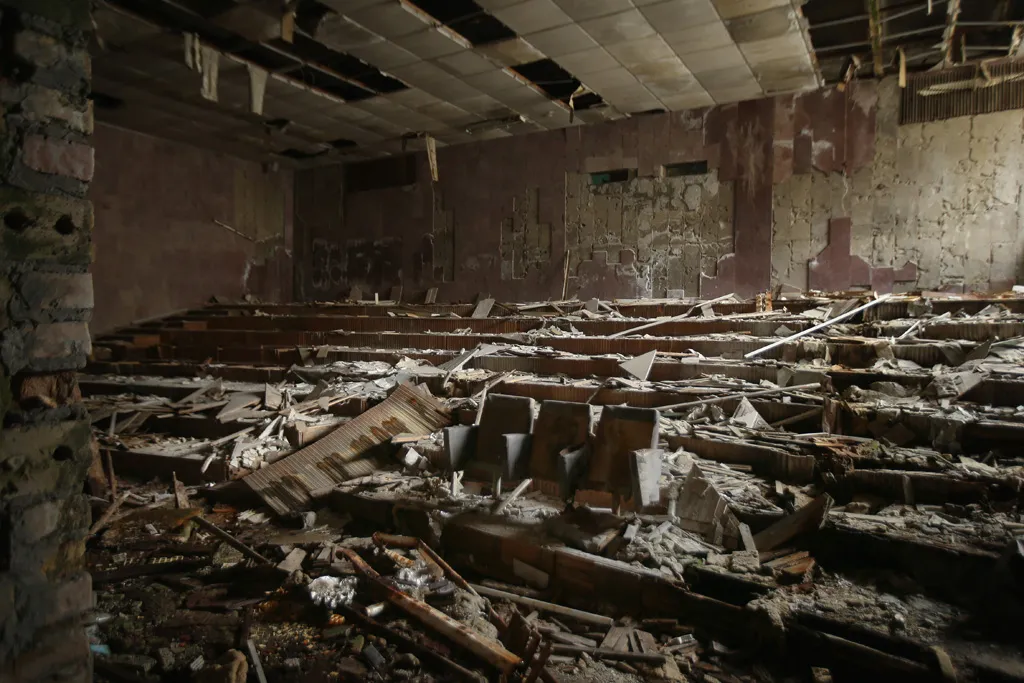
This used to be the auditorium of the Energetika cultural center that stood in Pripyat. It is now a damp and abandoned building that is home to collapsed ceilings and rotting wooden chairs that probably used to seat hundreds of audience members during shows.
The Palace of Culture Energetik was built during the '70s and was meant to bring rich arts and culture to the citizens of Pripyat. Now it is a complete ghost town.
Schoolbooks Are Left In Their Places
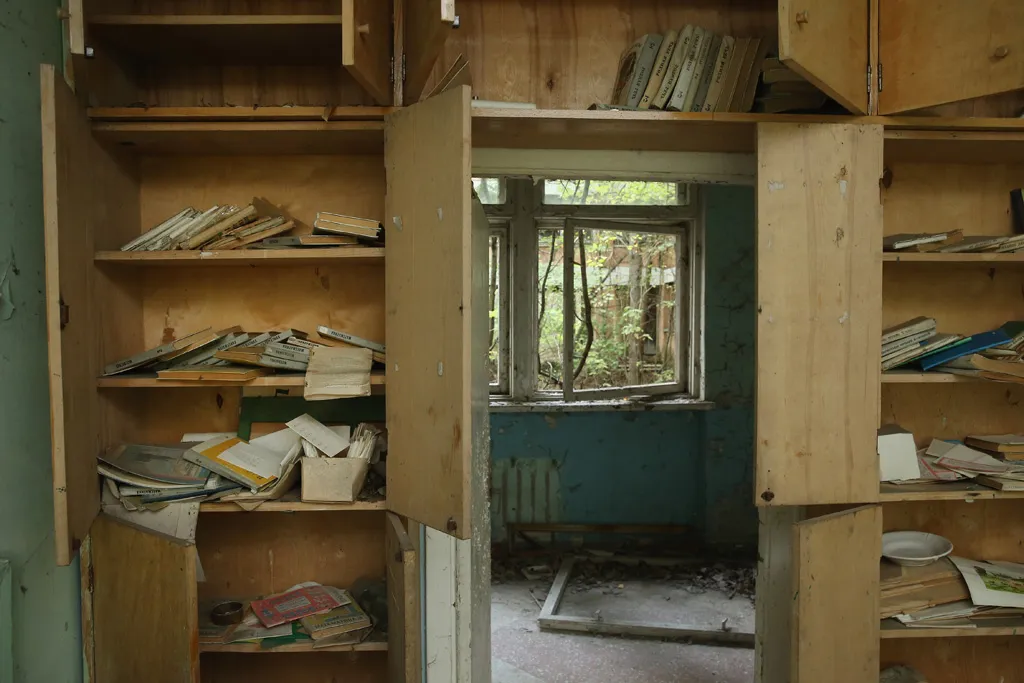
Schoolbooks still remain disheveled on shelves in an abandoned classroom at School Number 3 in Pripyat. It truly shows how life was put to an abrupt stop for the citizens of this unsuspecting city.
There were almost 5,000 students of kindergarten age and 6,786 students in secondary school at the time of the accident. Sadly, many of those bright futures met their incredibly dim end at the hands of an intense explosion.
Ivan Goes About Life As Normal
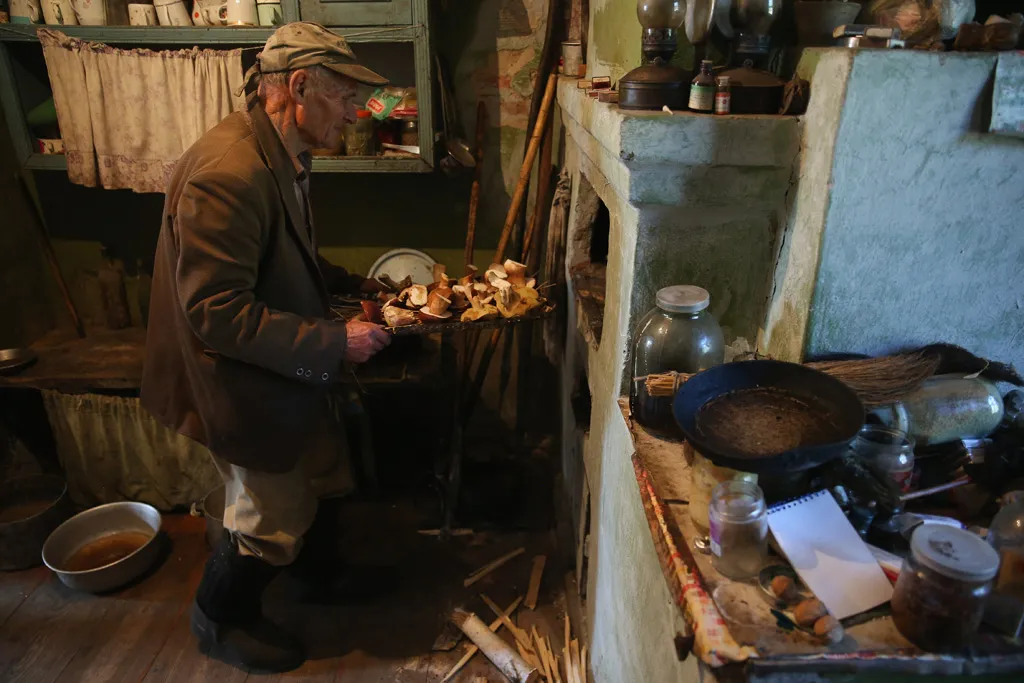
As you've previously read, many elderly folk have chosen to return to their homes inside the Exclusion Zone. 80-year-old Ivan Semenyuk is one such citizen. He returned to his home in the village of Parushev with his wife Marya.
Ivan forages for mushrooms in the forest, which he is putting in the oven to dry. He also raises chickens and grows corn, beets, potatoes, cucumbers, tomatoes, and pumpkins. He is one of the few people in Parushev, where 600 people used to live.
The Workers Who Didn't Make It
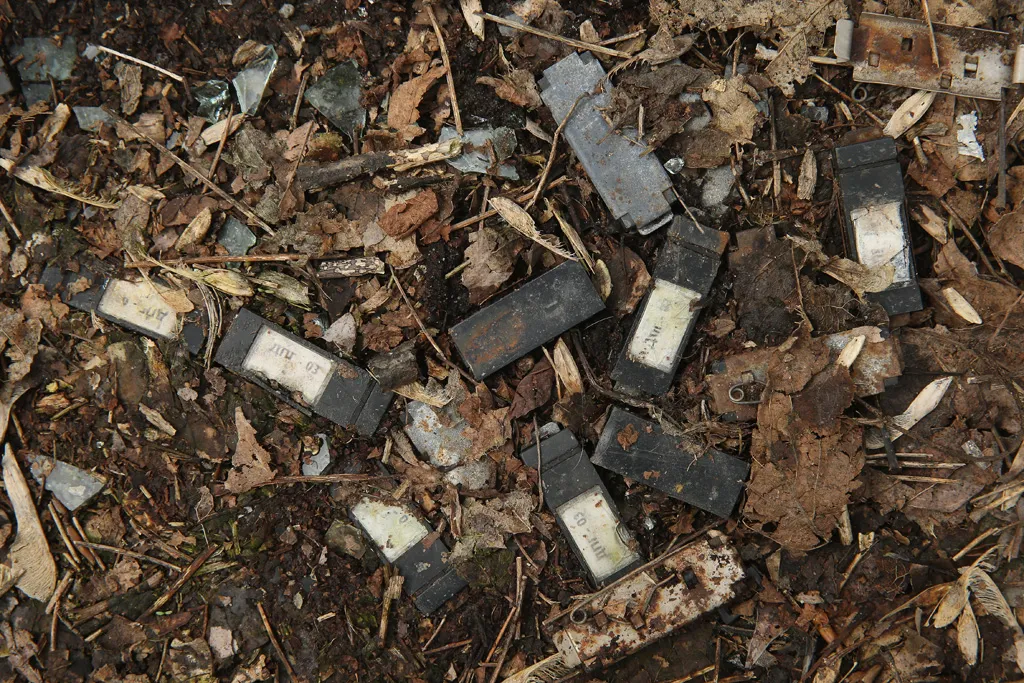
These are small dosimeters left scattered and inoperable on the ground in Pripyat. The dosimeters measure radiation dosage and they were used by the workers that were sent to clean up the aftermath of the accident.
These scattered devices evidence how dangerous these clean-up efforts were, as it was noted that more people lost their lives from clean-up than the explosion itself. These are similar to the devices given to tourists who visit Chernobyl.









